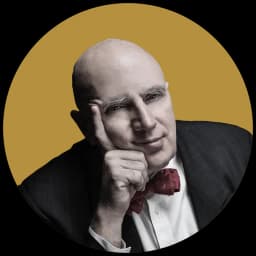Close Your Eyes and You’ll Soon Forget Benny Green Is Alone on Stage
Appearing at Birdland, he makes full use of the orchestral possibilities of the piano, at times playing like he’s got four hands, simulating an entire big band.

Benny Green
Birdland, Through August 20
‘Solo,’ Sunnyside Records
A quick tale of two Italian-American singers: Someone once asked Dion DiMucci what he thought of Vic Damone, and he responded, “It sounded like all he ever did was take singing lessons.” That’s sort of the way Benny Green plays the piano — you get the feeling all he ever does is practice, study, and perform 24/7. He has the kind of chops that are all-consuming: To paraphrase the late Gilbert Gottfried, if chops were a crime, he would be on death row.
At 60, Benny Green is one of the more imposing jazz pianists of our time; an hour-long solo set by Mr. Green includes more piano than I’ve heard in the last month. He’s in the middle of a six-show, three-night run of solo performances at Birdland, which also dovetails with the release of his new album, titled simply “Solo.”
Most artists during their gigs take at least a moment to plug and sell any new releases, or, as Birdland’s majordomo, Gianni Valenti, always announces, “If you’d like to take the music home with you….” With characteristic modesty, Mr. Green didn’t even mention he had a new album.
Whereas his contemporary, Bill Charlap, made a name for himself as a steadfast interpreter of what we call The Great American Songbook — Jerome Kern, George Gershwin, and company — Mr. Green’s speciality lands slightly to the left of that. He does play those jazz standards, which mostly originated in Broadway musicals, but his real focus is compositions by the great pianists of jazz history: Horace Silver, Randy Weston, Tommy Flanagan, John Hicks, Hank Jones, and those two iconic figureheads, jazz’s foremost pianist-composers, Duke Ellington and Thelonious Monk.
Mr. Green began his late set on Friday with the closest thing to a show tune he would play that night, “Time After Time,” written for Frank Sinatra in the 1946 movie “It Happened in Brooklyn.” Mr. Green started by laying out Jule Styne’s melody slowly and deliberately, using the tune itself as its own introduction, with suspenseful pauses between the key phrases. Even before the end of that rubato first chorus, he gradually began to work in Art Tatum-esque decorations.
If the first tune was the most Broadway, the second was the funkiest blues. This was “Grooveyard,” written by Carl Perkins and first introduced on a 1958 album by tenor saxophonist Harold Land. Mr. Green’s playing on the blues may be even more imaginative than what he plays on standards; here he’s less tethered to a discernible melody and even more inventive, while remaining firmly within the agreed upon framework of the blues.
Both here and on “Time After Time” — and elsewhere throughout the evening — Mr. Green made full use of the orchestral possibilities of the piano: Certain passages are played in solo, highlighting individual notes of the improvised melody, like a horn soloist; other parts are played like he’s got four hands, simulating an entire big band with all 17 member playing as loudly and energetically as possible. He often builds to block chords and other means of phrasing that create a veritable orchestral tutti — that moment after a solo when the whole ensemble comes charging back in.
Chops were really flying with Hank Jones’s high-intensity “Minor Contention” (1956); if you closed your eyes, you would swear that two pianists — or more — were playing in tandem. This was followed by other numbers in a minor mode, among them Tommy Flanagan’s “Minor Mishap,” the only number from the late set that is actually on the “Solo” album, while Duke Pearson’s “Say You’re Mine” was also in minor but hardly a mishap.
There also were several highly heartfelt ballads, such as “Some Other Spring” from the Billie Holiday songbook, and “Naima’s Love Song” — composed by John Hicks and named for his daughter — which he played with a floating quality that made me think of Bill Evans.
Mr. Green concluded with a romping reading of Duke Ellington’s 1950 “Love You Madly.” He employed heavy chords but swung mightily, phrasing in highly staccato fashion. The pronounced spaces between the phrases seemed to be accommodating imaginary dancers on the stage with him, twirling about the concert Yamaha.
This was a kind of encore: Mr. Green had already built to a climax with a breathtakingly fast reading of Horace Silver’s 1957 “No Smokin’.” Not only did his reading of the tune completely defy the command uttered in its own title, but, indeed, the keyboard got so smoking hot that I fully expected the fire department to break down the door and come charging into the Birdland Theater.

